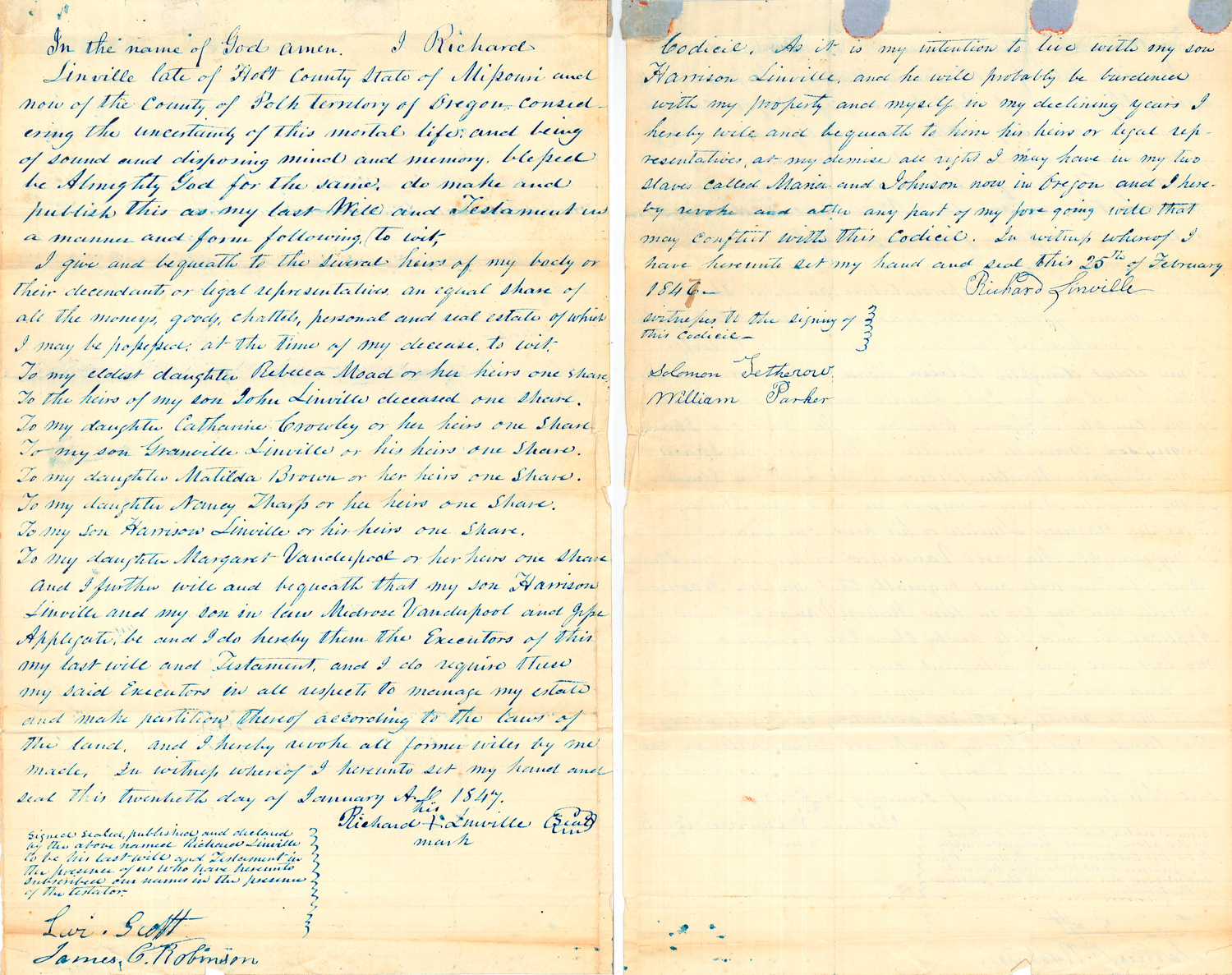Maria and Johnson (No Surnames)
Page Content
 Richard Linville's Polk County estate papers from 1847 refer to Maria and Johnson.
Transcript with enlarged images.
Richard Linville's Polk County estate papers from 1847 refer to Maria and Johnson.
Transcript with enlarged images. Although the Oregon Provisional and Territorial government had laws prohibiting slavery, they were not enforced and there were many legislative proposals designed to protect “slave” property in the territory.
The probate record of an early Polk County resident, Richard Linville, included this note:
“As it is my intention to live with my son Harrison Linville and he will probably be burdened with my property and myself in my declining years I hereby will and bequeath to him his heirs or legal representative, at my demise all right I may have in my two slaves called Maria and Johnson now in Oregon and I hereby revoke and alter any part of my forgoing will that may conflict with this codicil.”
The will and codicil were written prior to Oregon becoming a territory, so federal law later would have confirmed Linville’s right to possess slaves in Oregon based on the United States Supreme Court’s “Dred Scott Decision.”
Because of the lack of information, it is difficult to determine the exact identities of the two slaves mentioned in the will. The 1850 census entry in Polk County shows the Harrison Linville family with a William Johnson, age 11, in the household. There is no indication of race for William so it is difficult to determine if this is the Johnson mentioned in the will. A Maria Scott is also found in the 1850 Polk County census living in the household of Robin Holmes. Again there is no indication of race and there is evidence to point to this Maria being the widow of Scott, the “slave” who died in an accident while returning from California. Whether Maria Scott is the same Maria referred to in the Linville document remains unresolved.